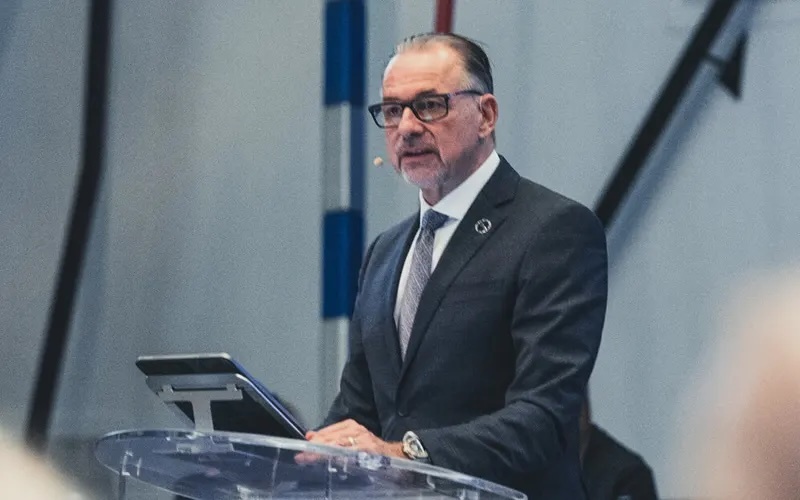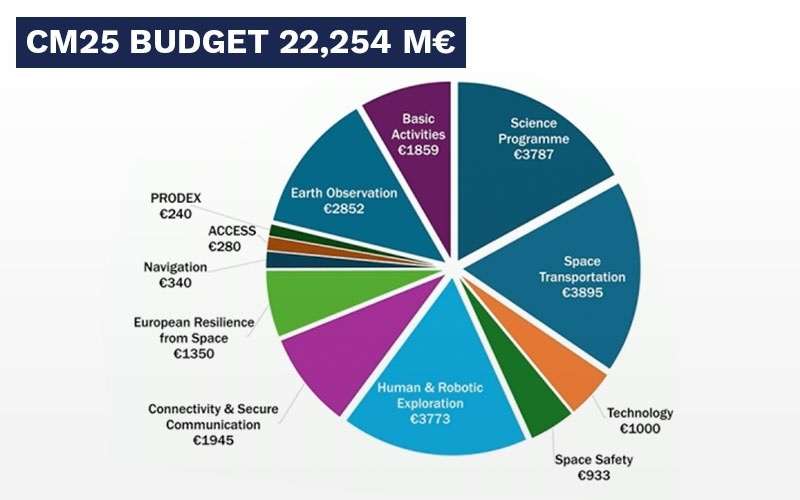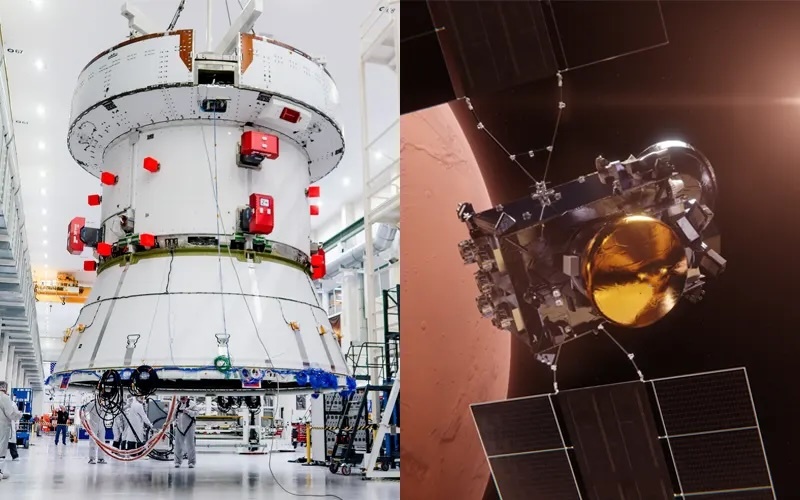28.11.2025

Credit: ESA / Ph. Servent
The European Space Agency (ESA) has proposed a budget of €22.254 billion for the next three years, up from €16.9 billion in the previous funding period.
A significant portion of the increase is due to the introduction of the agency’s new European Resilience from Space (ERS) programme, which has a proposed budget of €1.35 billion. The programme is designed to pool national space assets and develop new capabilities in intelligence, surveillance, secure communications, and navigation, with the aim of strengthening Europe’s resilience and autonomy in the face of emerging security threats.
The full extent of contributions to the ERS programme may, however, not be clear following the conclusion of the Ministerial on Thursday. Speaking to the media on 25 November, ESA Director General Josef Aschbacher explained that the subscription process for the programme would remain open for an additional year.
“In many countries, we have been discussing with Ministers of Defence, and for them, this is a new approach,” explained DG Aschbacher. “They do not know ESA very well, and we have to explain, and they have to familiarise themselves. And in many countries, it’s probably late in the process to now switch budgets from classic defence spending into ESA. So, there is more work to be done. We will continue to work with countries who show interest.”

Credit: ESA / European Spaceflight
The largest percentage increases were in the Commercialisation (now called ACCESS) and Technology programmes, which saw increases of roughly 137 percent and 84 percent, respectively. ACCESS supports Europe’s space sector by accelerating commercialisation and competitiveness, and the Technology programme develops next-generation space technologies for future applications.
The most significant euro value increases were for the Human and Robotic Exploration and Space Transportation programmes, which both rose by a little over €1 billion. The Scientific Programme has a proposed increase of €619 million, bringing its total to €3.787 billion over the three years.
While the proposed budget sets out ESA’s strategic priorities, the final subscribed amounts will depend on what Member States formally commit to as discussions at the Ministerial Council continue, with most subscriptions to be cemented by the meeting’s close tomorrow.
Quelle: European Spaceflight LTD
+++
ESA to Repurpose European Service Module and Earth Return Orbiter

Credit: NASA / Airbus
The European Space Agency (ESA) is exploring options to repurpose both the European Service Module and the Earth Return Orbiter, as support in the United States for the NASA programmes they were originally designed to serve now appears uncertain.
On the second day of ESA’s Ministerial Council in Bremen, Director General Josef Aschbacher presented the agency’s programme and funding proposals to representatives from the Member States. Among the proposals was a potential path forward for ESA’s contributions to NASA’s Artemis programme, specifically the Orion crew capsule, and to the Mars Sample Return mission.
European Service Module (ESM)
ESA’s contributions to NASA’s Artemis programme centre on providing the service modules for the Orion capsule, the development of which is led by Lockheed Martin, as well as elements of the lunar Gateway space station. These contributions will secure Europe’s access to future crewed missions to Gateway for three European astronauts.
The agency has currently contracted Airbus Defence and Space to build six service modules for Orion, designated ESM-1 through ESM-6. NASA’s fiscal 2026 budget request, released in May, proposed canceling the lunar Gateway and ending Orion after Artemis III. However, in July 2025, Congress approved funding for Artemis IV, meaning at least one additional module will now be used. The future of the remaining units is still uncertain.
In the agency’s proposal to Member States, ESA has outlined potentially repurposing the ESM as an “autonomous modular cargo tug.” The implementation of an ESM evolution will be based on the outcome of an ESA assessment and “international context,” which likely refers to the potential need for such a vehicle.
Earth Return Orbiter
Mars Sample Return is a joint ESA–NASA mission that aims to return samples from the surface of Mars to Earth for study. As its contribution to the mission, ESA is building the Earth Return Orbiter, which will collect the samples in Mars orbit and carry them back to Earth, and the Sample Transfer Arm, which will operate on the surface to transfer the sample tubes into the Mars Ascent Vehicle. The mission is, however, currently facing potential cancellation by the US government after its 2026 budget proposal described the mission as “grossly over budget.”
In its proposal to Member States, ESA has suggested repurposing the Earth Return Orbiter as a “dedicated European exploration mission, with scientific and communication relay dimensions.” The proposed mission, known as ZefERO, would launch in 2032 and aim to study Martian winds and conduct geological investigations, in addition to serving as a communications relay.
The agency has also suggested that ZefERO could impact the scope of its LightShip programme. LightShip is intended to be a propulsive tug that would enable the delivery of passenger payloads to Mars orbit. The tug is also expected to host a data relay payload. While the implementation of ZefERO is unlikely to impact the tug’s payload delivery role, it may replace its data relay function.
In addition to the Earth Return Orbiter, the agency is also examining a new application for the Sample Transfer Arm, focusing on supporting operations on the lunar surface.
Quelle: European Spaceflight LTD
